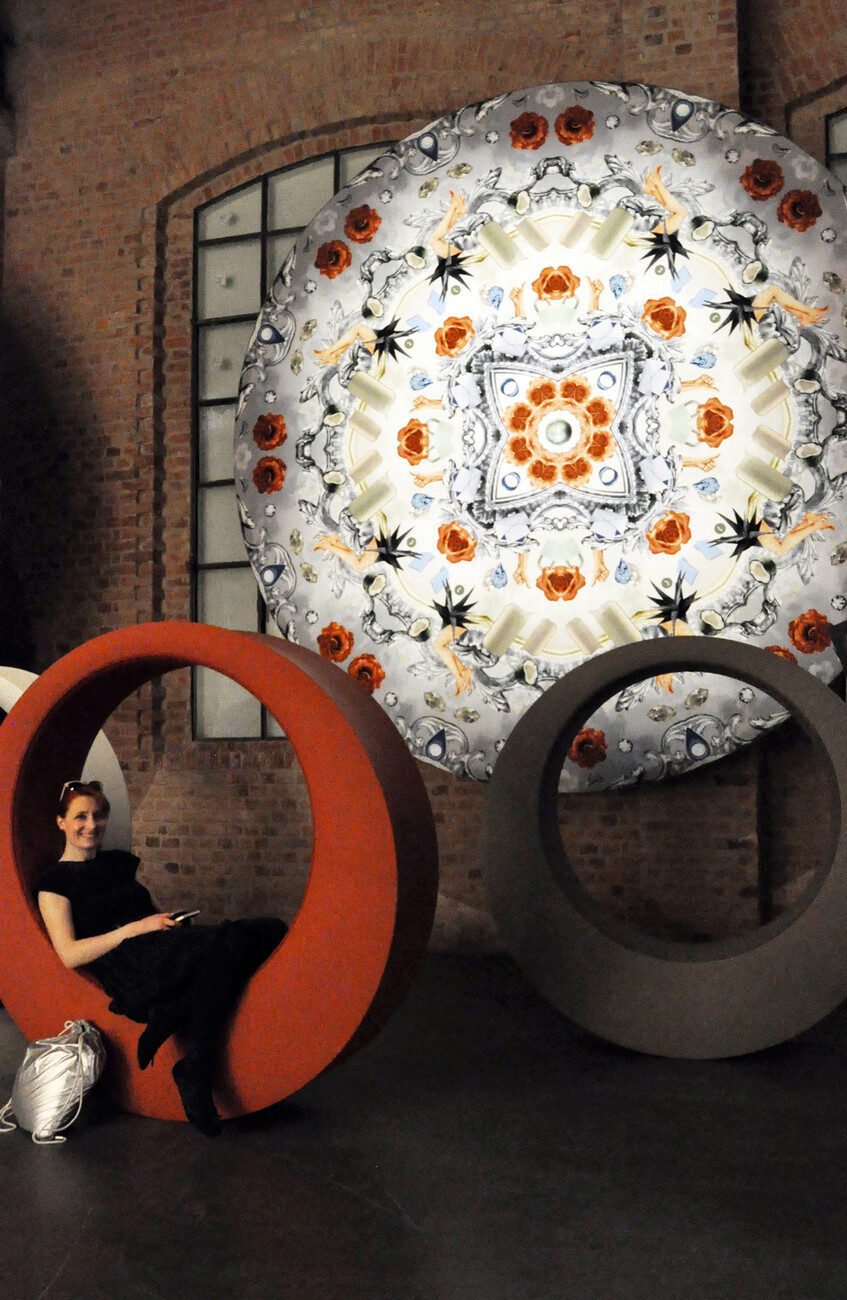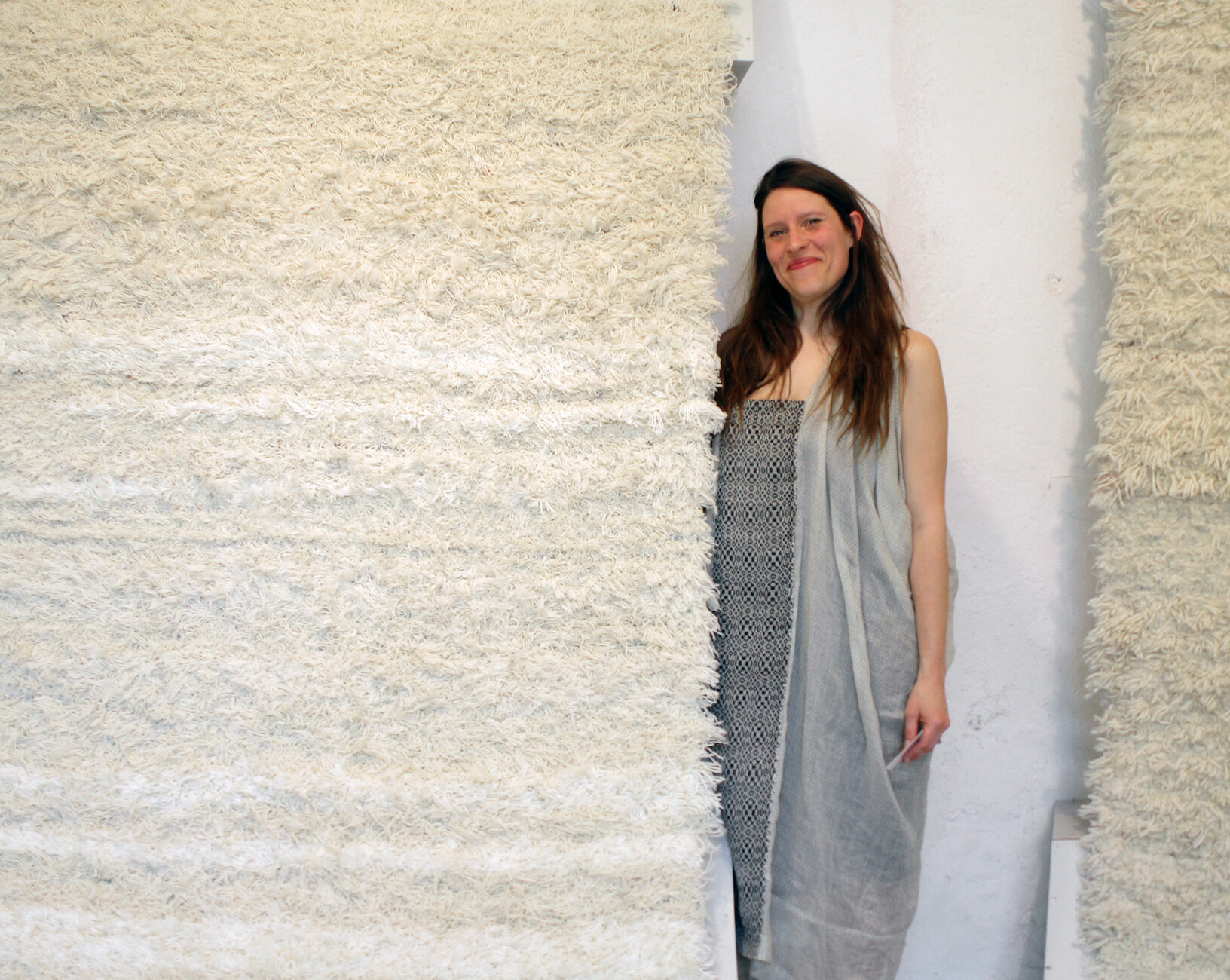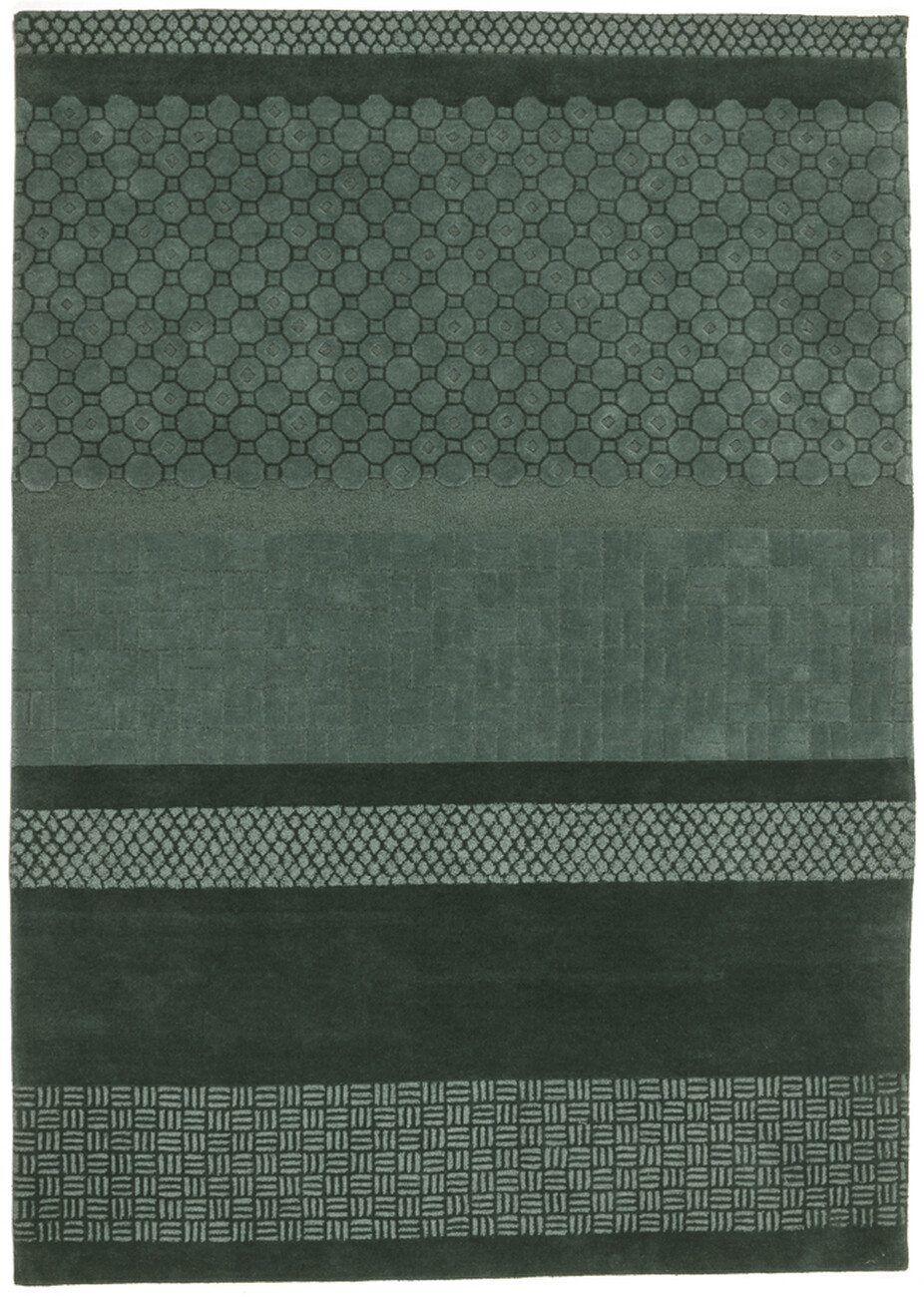Some plain, others opulent: carpets in all manner of variants
Even the most beautiful herringbone parquet requires its counterpart. To be found in the guise of the soft and patterned surfaces of handmade designer carpets. After the triumph of minimalist structures and tender colors seemed to be in the bag, colors, shapes and patterns are back with a vengeance and at times even a tad crazy.
The main focus at present is on graphic patterns, such as for the “Rotazioni” and “Visioni” carpets by Patricia Urquiola for cc-tapis. Similar to drawings, the geometric figures rely on color contrasts and clear black lines to create a 3D effect. By contrast, Mae Engelgeer in her “Bliss” collection for cc-tapis combines color shades that resemble digital graphics and function more as tapestries than as utilitarian objects for underfoot. For Walter Knoll Helmut Scheufele translates African landscapes into highland wool, silk and yarn made from nettle fibers for the “Legends of Carpets” collection. While Amini opts completely for art and transforms a selection of abstract pieces by Italian artist Manlio Rho into “Composizione 57 10” and “Composizione 57 12”, both carpets made of Tibetan wool.
The journey into the wonderful world of graphics continued in Milan in one of the cloisters of the former San Simpliciano monastery, which formed an extraordinary stage, among others, for Florian Hauswirth’s “Color Stamp” and Maarten Baas’ “Ciliophora Green” for Nodus. Florian Hauswirth experimented with superimposed layers of colored surfaces to create a pattern reminiscent of bacteria seen under a microscope, while Maarten Baas delved straight into biology textbooks and derived his pattern from the Ciliophora ciliate – an inhabitant of the oceans that is actually less than one millimeter in size. Transformed into a pattern, the single-cell organism’s longitudinal shape prompts viewers to seek to discover something known in the collection of lines – even possibly a maze seen from a bird’s eye view thanks to the carpets intense green.
To be admired at the same venue: David Elia’s “Bala Perdida” (meaning the “lost bullet”), a carpet that has the feel of a trophy about it thanks to the ostensible bullet holes together with metal shells. Conflicts and the joie de vivre of Rio de Janeiro, the designer’s home town, are regularly reflected in his work, be it the bullet holes or the tops of flip-flops, inserted into carpentry – as an homage to the rhythm of life on the famous promenade along Copacabana beach.
The Moooi showroom was opulently floral in tone, celebrating an “extraordinary life”. A celebration cries out for any number of lush blooms and Marcel Wanders gave them concentrated form as a carpet pattern – they even grow under the table feet. The spectrum runs from the full blossoms of “Eden Queen” to the morbid beauty of “Fools Paradise”. This wonderland also included the kaleidoscope effects of “Utopian Fairy Tales”, courtesy of Noortje Eekelen, and the big city colors that Neal Peterson transformed into round mandalas. Less strident, but no less rhythmic tones were presented by Nanimarquina, the Brothers Bouroullec and Salem van Swaagh – at times together: Ronan and Erwan Bouroullec developed the “Lattice” carpet for Nani Marquina. Its shape and effect depend on how many times the underlying pattern is repeated. “Semis” is the name of their design for Danskina, the overall face of which is derived from different arrangements of dots. The dynamic tile pattern of the streets of Shanghai provided the inspiration for Neri&Hu’s “Jie” for Nanimarquina. Just how intense soft tones can be was emphatically demonstrated by Salem van der Swaagh in Ventura Lambrate: The material for her heavy woolen carpets comes completely from the high-grade selvages of manufacturers who are specialized in fabric upholstery. Her first collection centers on the nuances of white as a theme, among other things because a large part of the collection was made by a weaver who is blind.
Dutch studio Plott relies on less traditional craftsmanship and more on advanced technology: Rudi Boiten and Mireille Burger have designed featherweight grid structures that are given life using a 3D printer and textile fibers. Their “Open Rugs” are as a result both very robust and highly versatile.























































